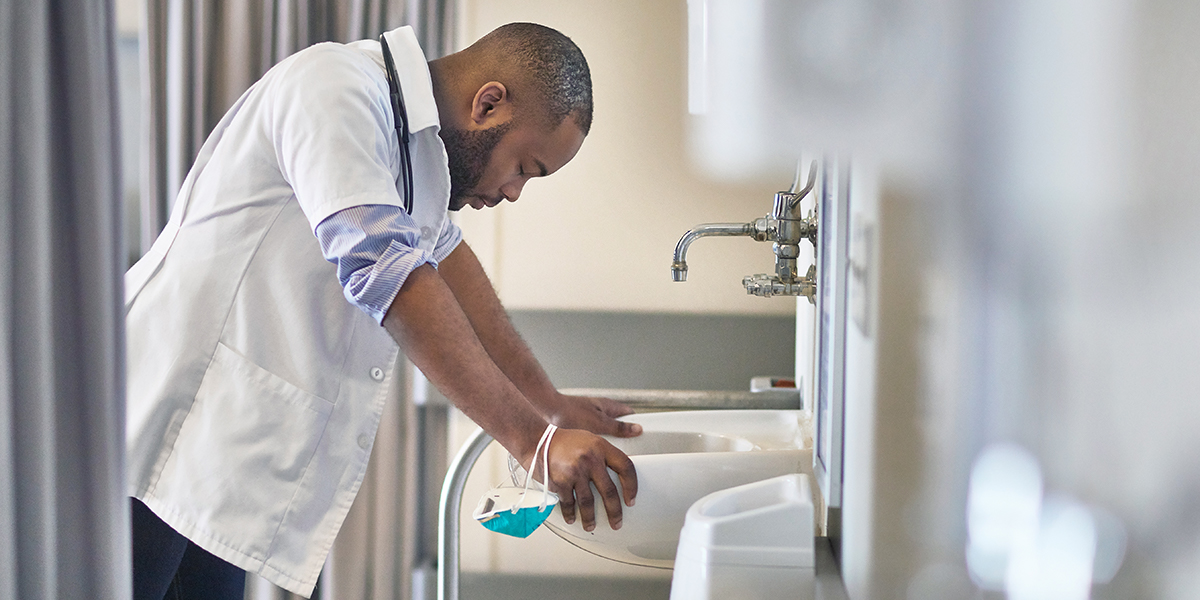Provider Burnout: No Silver Bullet for Change
Though a recognized issue, change in provider burnout requires system-wide efforts.

Provider burnout is not just a HIT buzzword. Addressing this critical issue — exasperated by workflow inefficiencies, alert fatigue and data-entry overload — should be top of mind as we think about how to “be the change”.
Clearly, awareness is not the issue at hand: We’ve recognized and worked toward solving it since before the implementation of electronic health records.Physician Burnout, Annals of Internal Medicine, July 2001
This issue isn’t new, and there is nothing unique about solving it. While we can’t write a prescription to cure burnout in physicians and nurses, there are multichannel approaches to mitigate issues as they stand and continue to focus on prevention strategies to help keep clinicians passionate about healthcare in the future.
You Can’t Pour from an Empty Cup
While burnout is a phenomenon experienced in many industries, the Maslach Burnout Inventory-Human Services Survey for Medical Personnel specifically measures three domains for those in healthcare: emotional exhaustion, depersonalization and low sense of personal accomplishment.Valid and Reliable Survey Instruments to Measure Burnout, Well-Being, and Other Work-Related Dimensions Understandably, anyone under this amount of pressure cannot effectively complete their job – much less connect with and care for other humans in need. Studies have identified burnout as a threat to safe, high-quality patient care, as it can lead to medical errors and a poor visit experience.Moss, Marc, Vicki S. Good, David Gozal, Ruth Kleinpell, and Curtis N. Sessler. “An official critical care societies collaborative statement: burnout syndrome in critical care health care professionals: a call for action.” American Journal of Critical Care 25, no. 4 (2016): 368-376.
The Health Policy Institute of Ohio describes this as a bidirectional relationship between patient care and safety and clinician wellbeing. One directly influences and feeds the other, whether positive or negative.A call to action: Improving clinician wellbeing and patient care and safety, Health Policy Institute of Ohio, February 2020
To support impacted clinicians and, in turn, create a safer, more supportive patient care environment, systemic changes must take place within health systems. Some have achieved this through a team of dedicated professionals that keep a pulse on clinician wellbeing, offering mental health programs and engaging staff to feel less isolated, as it is a systemic issue.
Addressing Workflow Inefficiencies
Indiana University Health Physicians has implemented a Practice Improvement Team (PIT Crew) dedicated to improving the overall efficiency of the practice, gathering data on busy times and working with the IT team to address issues with their EHR.Tackling Employee Burnout: Q&A with IU Health Physicians, WellRight, November 2018 Sometimes simply zooming out to gather data on the individual health system or practice can reveal sticking points that can be addressed through a systemic change. Perhaps a shift in staffing or a reorganization based on individual strengths can address pain points in an overall workflow.
Other tactics can be much more technology-driven. While most are put in place to automate processes, clinicians have spoken up about “alert fatigue” and the multiple layers of data gathering can be worse than the long hours and intensive work of providing patient care.Commentary: How ‘Alert Fatigue’ Truly Exhausts Us, American Association for Physician Leadership, November 2018 New approaches to data gathering and mitigating an onslaught of “FYI” alerts are using predictive artificial intelligence — the intention of which is not to replace the provider, but to free them of clerical chains so they can get back in front of the patient. Pilots are currently underway with ambient clinical intelligence (ACI),How AI in the Exam Room Could Reduce Physician Burnout, Harvard Business Review, November 2019 which uses speech and voice biometrics to predictively capture information shared during an appointment as well as make suggestions based on the discussion.
Skill-Building and Well-Being
There is clear support in the healthcare community for reversing clinician burnout and its effects. In 2018, the National Academy of Medicine announced a collaboration of over 130 medical associations, hospitals and societies in the Action Collaborative on Clinician Well-Being and Resilience. Using resources from these groups and other innovators in the clinician wellbeing space can help other practices and health systems create an environment of camaraderie and obstacle elimination.
Because there is no single cause to the clinician burnout epidemic, there is also no silver bullet for change. It takes dedicated attention and effort at a system-wide level to improve the lives of these healthcare providers. This is worthy work that we, as healthcare leaders, should lean into. This recognition and investment in providers will, in turn, result in better care for our patients.
Visit the HIMSS20 Interoperability Booth for sessions on how interoperability can improve physician burnout, and check out other track sessions on this topic as well.
The latest healthcare insights, floated right to your inbox.





